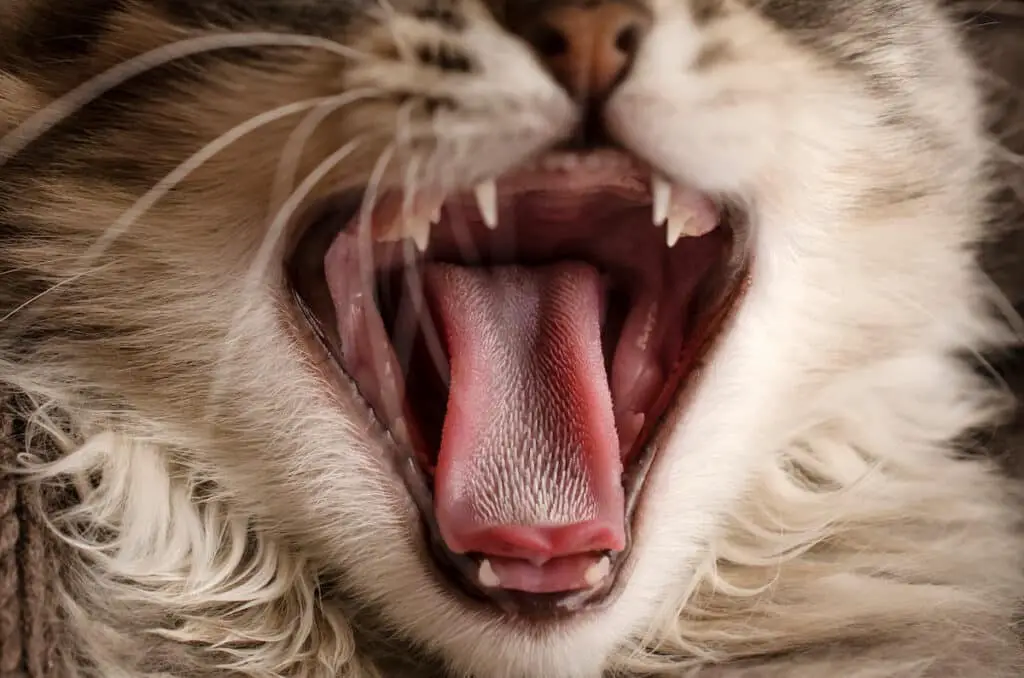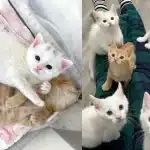Cats have rough tongues mainly for grooming themselves, and they groom themselves for up to 4 hours per day. This may seem like a lot, but there are actually several reasons why cats need to groom so often.
Cats groom themselves by licking their fur with their tongue. This helps them remove any dirt, extra hair, and smells that would give away their location to both prey and predators.
When a cat licks her fur, she is not only cleaning herself, but also spreading healthy oils from her skin. licking another cat’s fur can be a way for cats to show that they are friends. Amazingly, licking with a rough tongue can also help cats stay cool.
Why Cats Have Rough Tongues
The tongue of a cat, including Kitty, is covered in curved spines. These spines are called papillae and are hardened with keratin. This is also what our fingernails and cat’s claws are made of. This is the main reason cats have rough tongues.
The small bumps on a cat’s tongue look a lot like a cat’s claws. They are curved backwards so that the sharp parts are pointing towards the back of the cat’s mouth.
As a cat licks her fur, the tiny spines on her tongue act as a comb to keep her coat clean. The spines are shaped so that they can easily remove hair from the tongue in one go (unlike a hairbrush with bristles that point upwards).
In addition to maintaining hygiene, these tiny papillae are also used by cats to shred meat and pick up food while they eat.
Tongues Are Excellent at Removing Tangles and Mats
The spines on a cat’s tongue can rotate, which means they can move around. Cats have rough tongues to remove mats and tangles from her fur. When Kitty widens her tongue to lick herself clean, the spines stand up so they’re pointing straight up. This allows the spines to touch as many hairs as possible.
Cat Tongues Are Also Air Conditioners
When cats lick their fur, they are not only cleaning themselves but also cooling their bodies. Each time the cat licks her fur, she wets it with her saliva which then evaporates, slowly cooling the surface of her coat. This creates a temperature gradient between the surface of her skin (very warm) and the outside layer of her fur (which can be 63ºF cooler), so heat moves away from her body surface into cooler areas.
Did you know that cats sweat only from hairless areas, such as their paw pads, chin and nose? In fact, this is the main reason cats have wet noses. So, this type of evaporative cooling through grooming is a really important way for cats to control their body temperature–particularly when they have thick fur coats.
Big Cats Have Spiny Tongues, Too
The spines on the tongues of large cats, such as lions, leopards, and tigers are similar in size and shape to those of our domestic cats. These larger tongues contain significantly more of these helpful spines since they have more fur that needs cleaning. The grooming habits in this family Felidae look practically identical as demonstrated in the video above from Alexis Noel and David Hu’s research.
Do Other Animals Have Spiny Tongues?
It’s not just hedgehogs that have spiny tongues! Other animals use them for various purposes, such as catching food. For example, the giant ant eater has a 2-foot-long tongue covered in tiny sharp spines to help it eat insects. Birds like penguins, flamingos, geese and some raptors also use the spines on their tongues to grip prey or filter out small edibles like shrimp or fish from water.
Cats and cows both clean themselves with their tongues. Cow tongues are especially good at this because they are the right amount of scratchy to remove ticks and long enough to reach a cow’s nose.
Cows playing with their tongues might seem strange, but it’s actually something that veterinarians believe comes from a cow’s natural instinct. Cows typically use their tongues to sweep grass into their mouths, but grain-fed cattle don’t have the same opportunity to do this since they’re usually fed pellets. So instead, they often display the same behavior during play.














